A thermodynamic system is taken from an original state D to an intermediate state E by the linear process shown in (figure)

Its volume is then reduced to the original value from E to D via F by an isobaric process. Calculate the total work done by the gas from D to E to F to D.
Total work done by the gas fromD to E to F=Area ofΔDEF
Area ofΔDEF=12DE×EF
Where,
DF = Change in pressure
=600N/m2−300N/m2
=300N/m2
FE = Change in volume
=5.0m3−2.0m3
=3.0m3
Area ofΔDEF=12×300×3=450J
Therefore, the total work done by the gas from D to E to F is 450 J.
Topper's Solved these Questions
Similar Questions
An ideal gas change from state a to state b as shown in Fig. what is the work done by the gas in the process?
 View Solution
View SolutionA thermodynamic system consists of a cylinder-piston attangement with ideal gas in it. It goes from the state i to the state f as shwon in the figure. The work done by gas during the process is
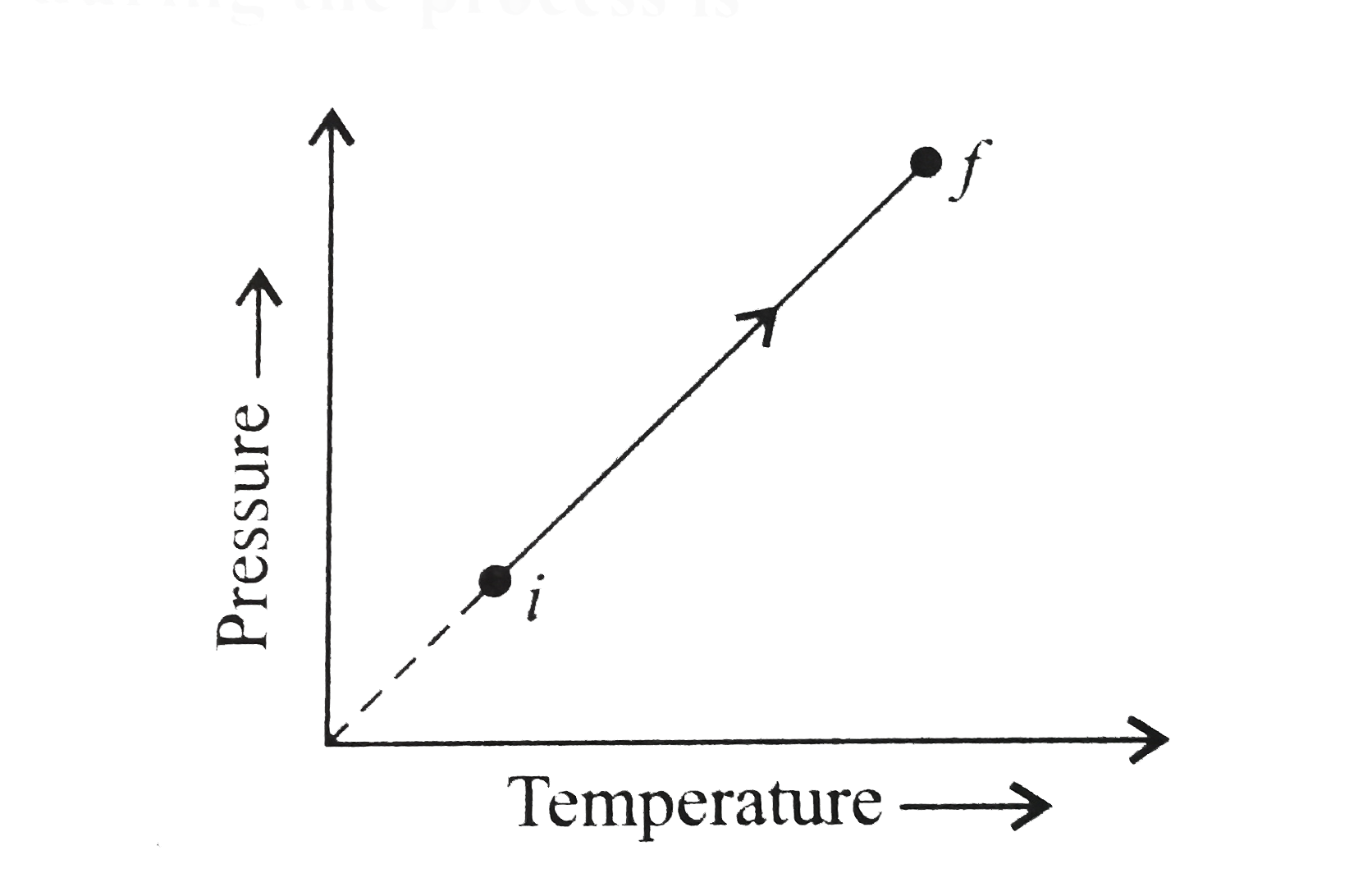 View Solution
View Solution
Knowledge Check
- Question 1 - Select One
A thermodynamic process is carried out from an original state D to an intermediate state E by the linear process shown in figure. The total work is done by the gas from D to E to F is
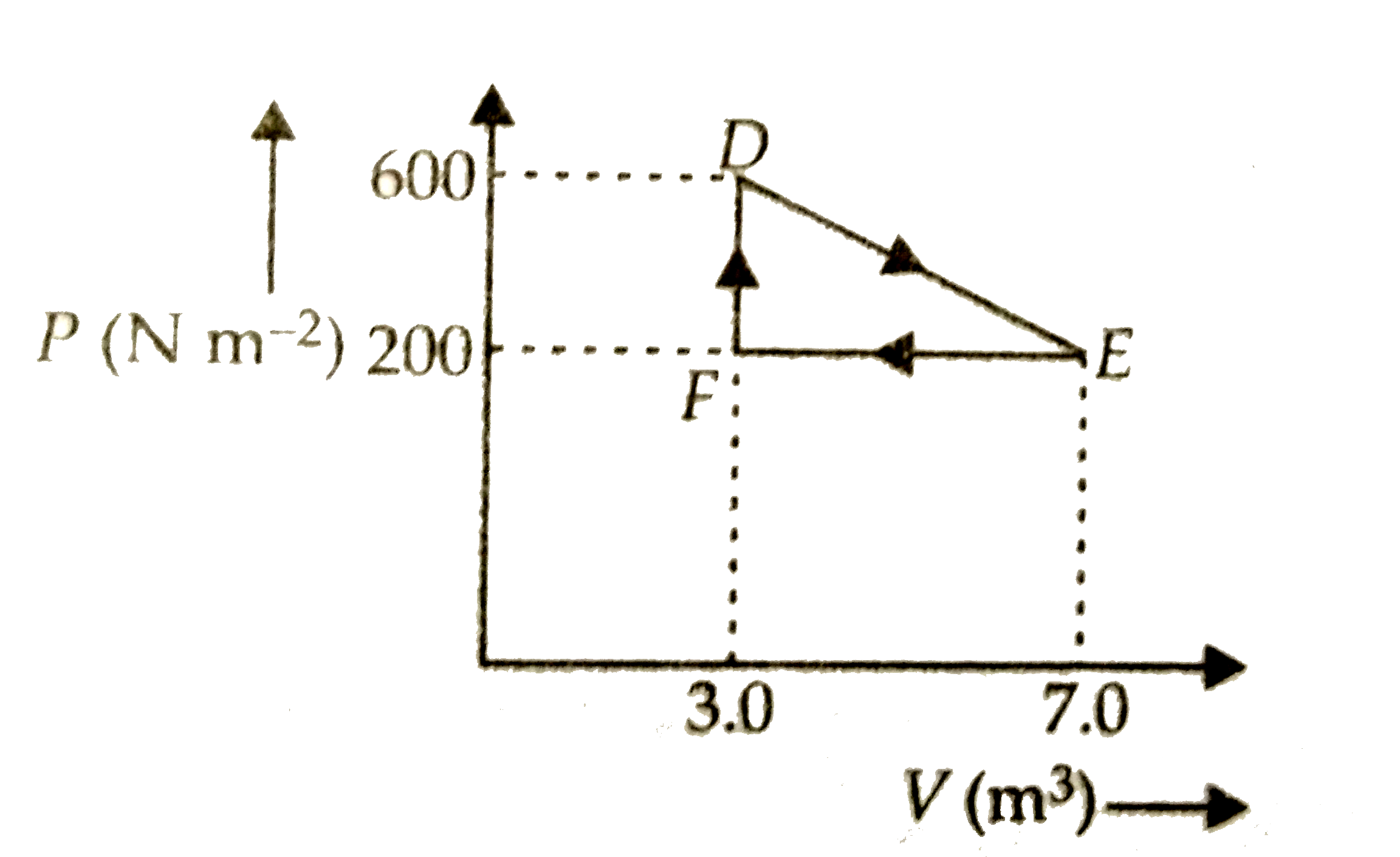 A100 JB800 JC300 JD250 J
A100 JB800 JC300 JD250 J
An ideal gas goes from the state i to the state ∫ as shown in .the work done by the gas during the process
 View Solution
View SolutionA monatomic idea gas of 2mol is taken through a cyclic process starting from A as shown in figure. The volume ratio are VB/VA=2 and VD/VA=4. If the temperature TA at A is 27∘C, and gas constant is R. Calculate.

The total work done by the gas during the complete cycle.View SolutionA certain mass of gas is taken from an initial thermodynamics state A to another state B by process I and II. In process I for the gas does 5J of work and absorbs 4J of heat energy. In process II, the gas absorbs 5J of heat. The work done by the gas in process II is
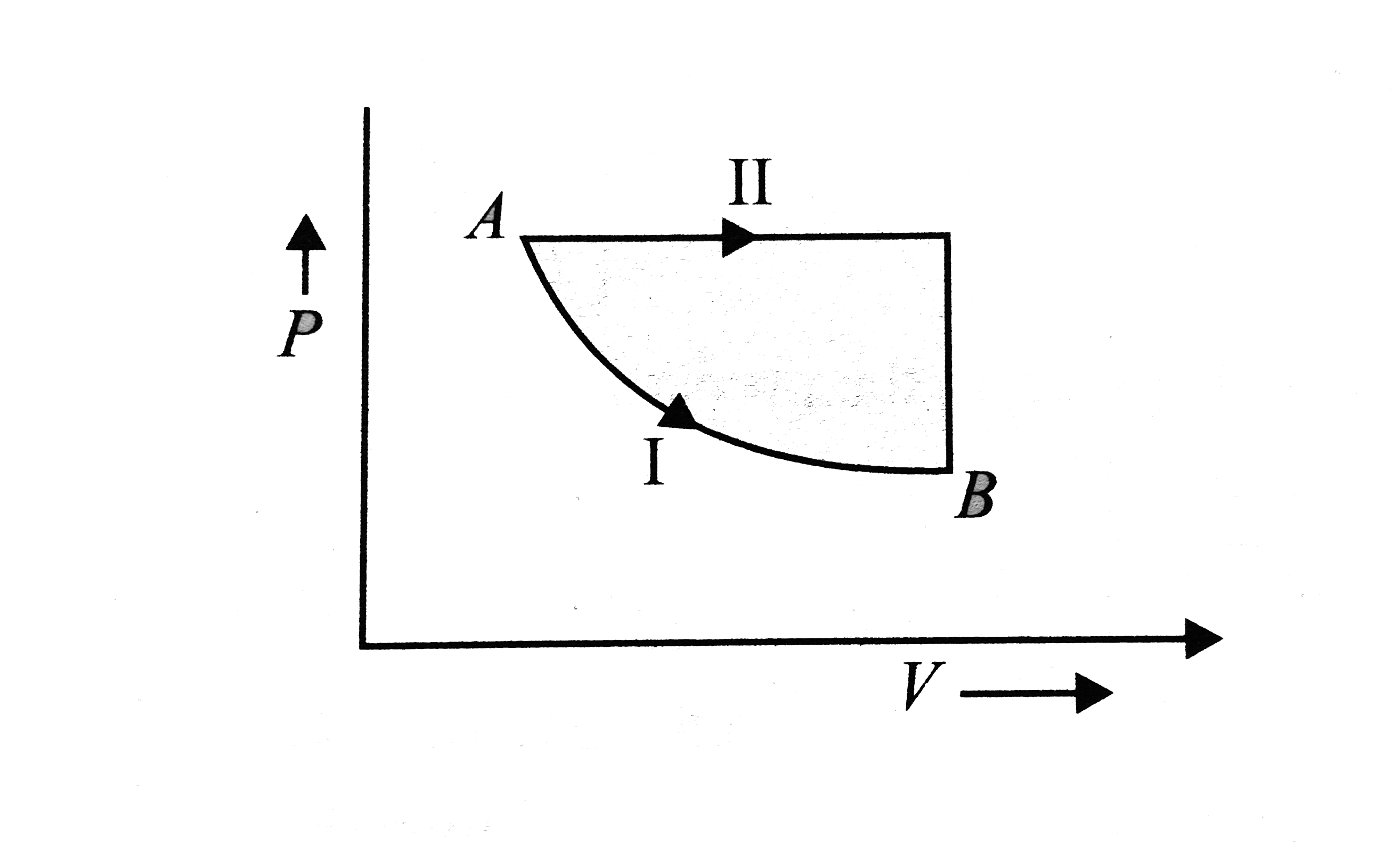 View Solution
View SolutionStatement I: When an ideal gas is taken from a given thermodynamics state A to another given thermodynamic state B by any polytropic process, the change in the internal energy of the system will be the same in all processes.
Statement II: Internal energy of the ideal gas depends only upon its absolute temperature.View SolutionA sample of ideal gas is taken through the cyclic process shown in the figure. The temerauture of the gas in state A is TA =200 K. In states B and C the temperature of the gas is the same.
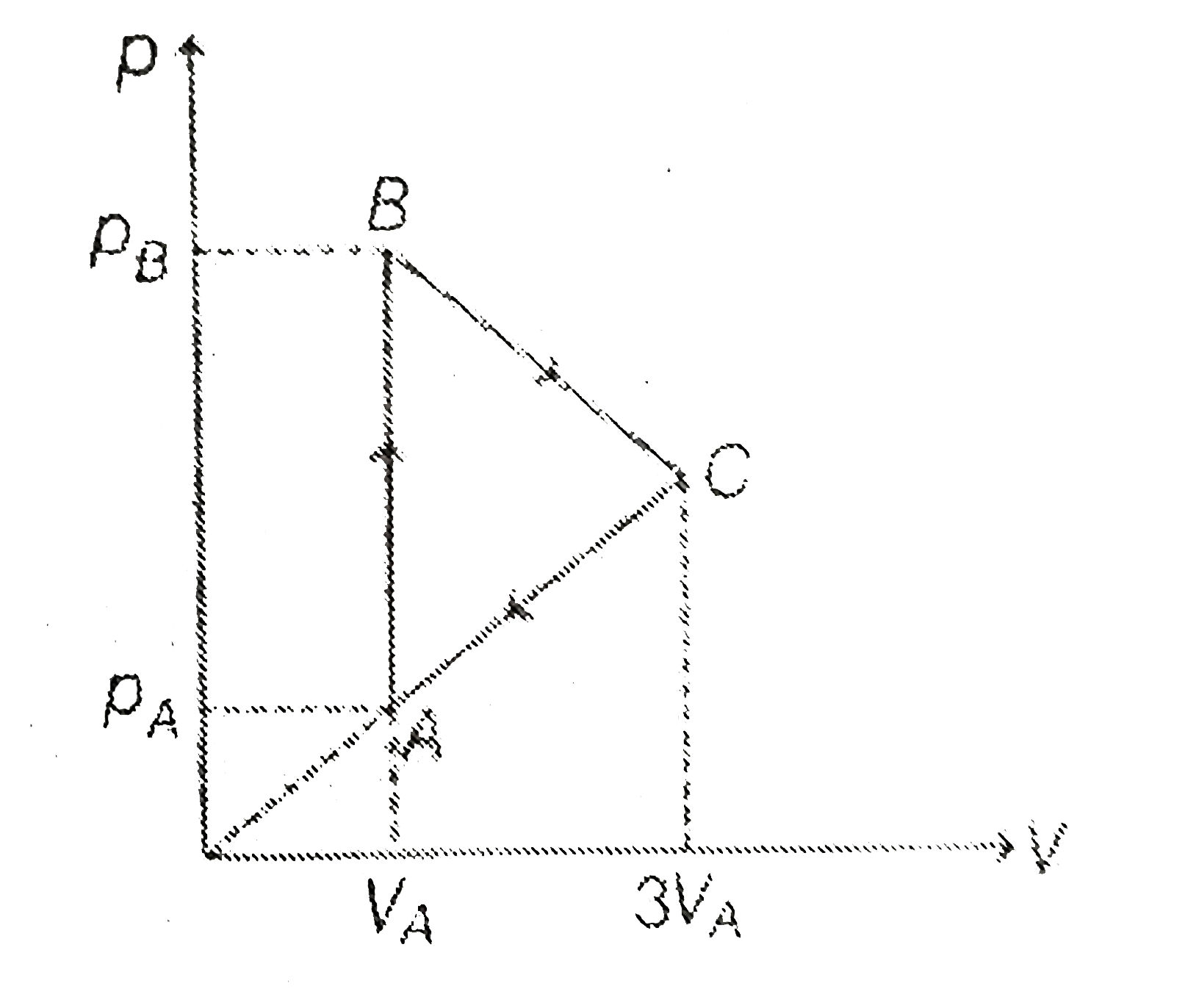
Net work done by the gas in the process isView Solutioncalculate the work done by a gas as it is taken from the state a to b, b to c and c to a as shown in
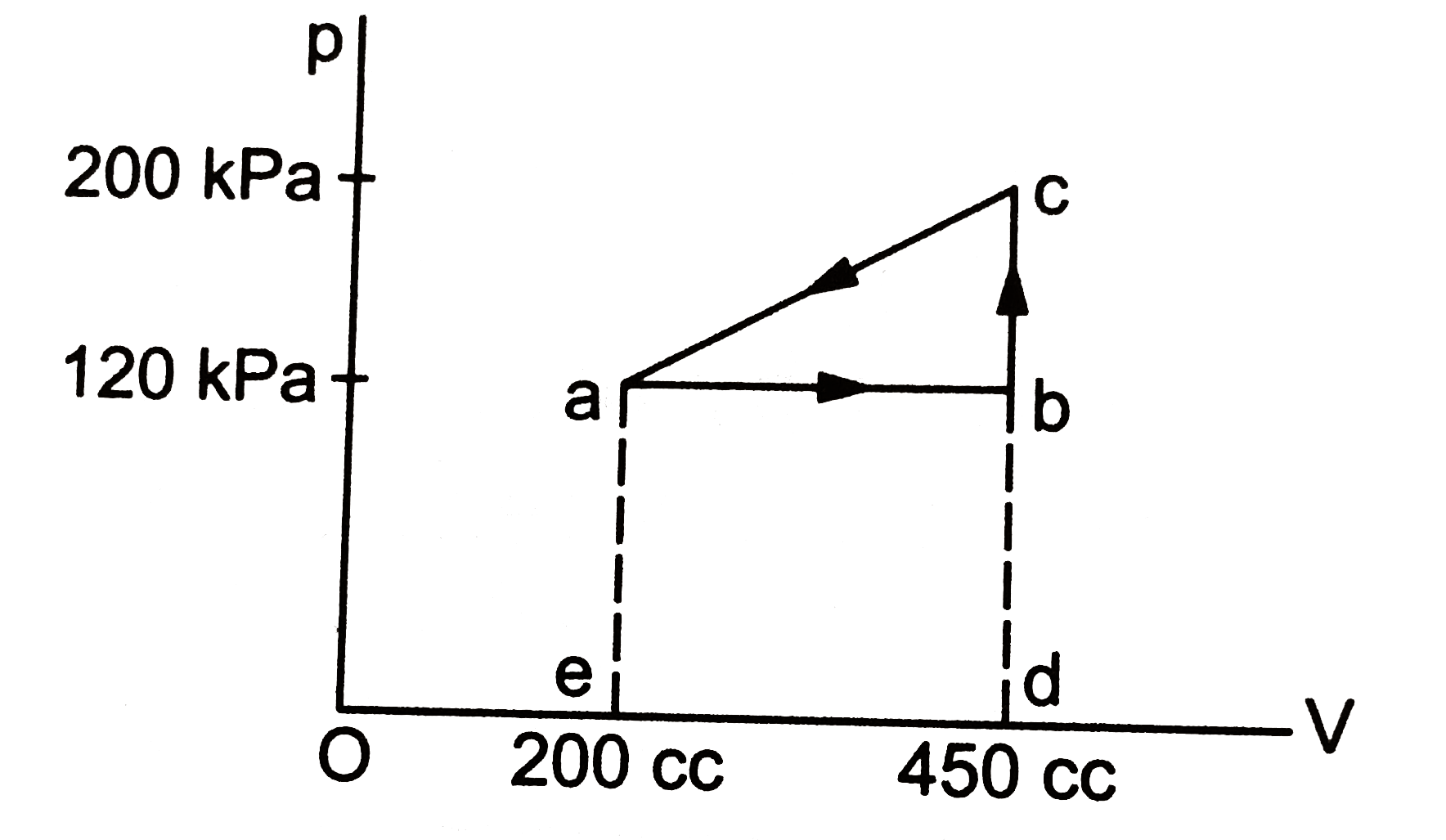 View Solution
View Solution1.0 mol of a monoatomic ideal gas is expanded from state (1) to state (2) as shown in figure. Calculate the work done for the expansion of gas from state (1) to state (2) at 298 K.
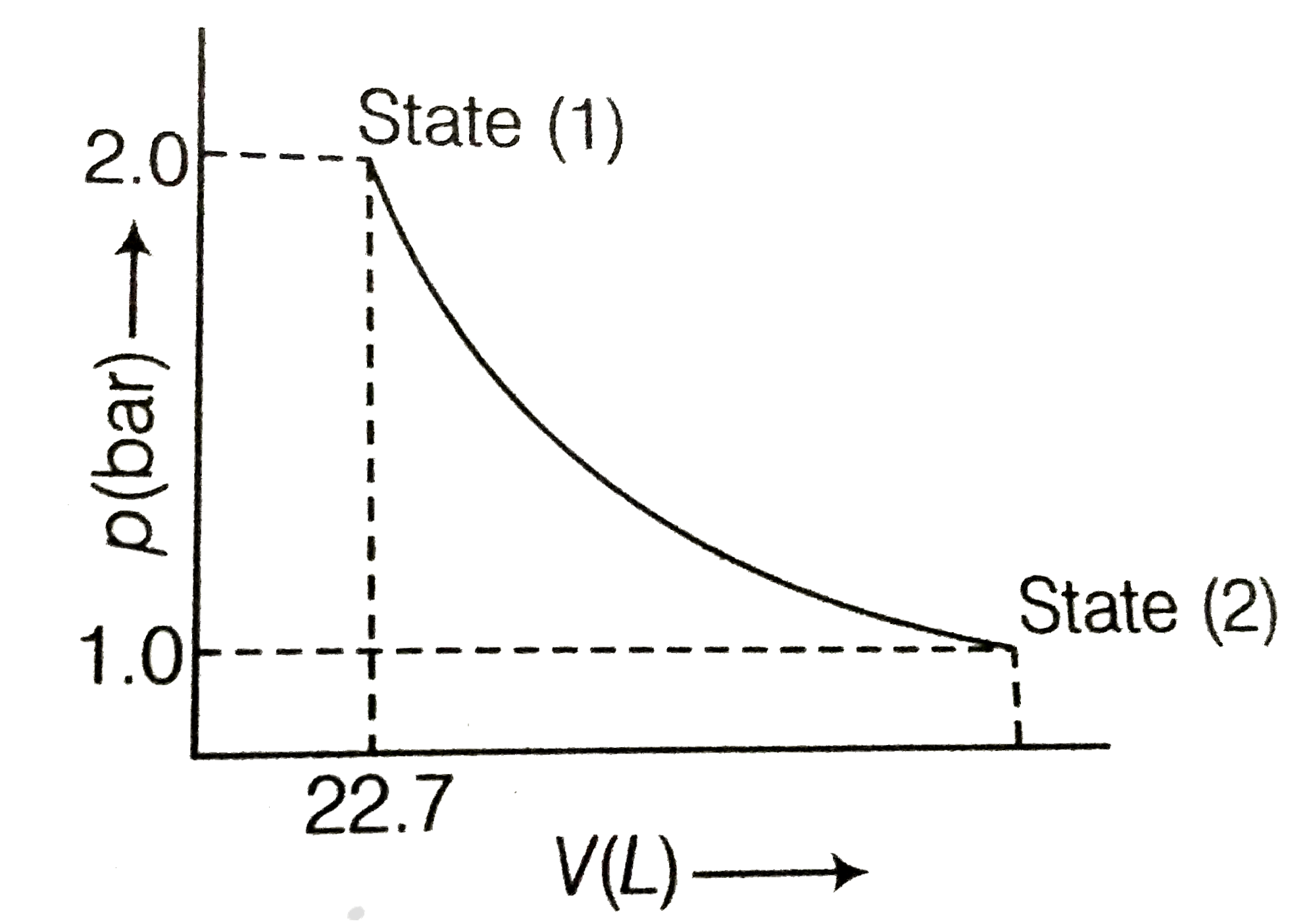 View Solution
View Solution

